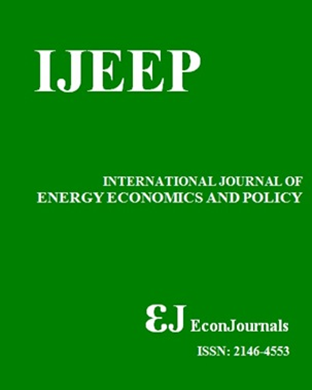Energizing Sub-Saharan Africa Economies through the Nexus of Foreign Direct Investment, Regulatory Quality, and Renewable Energy Consumption
DOI:
https://doi.org/10.32479/ijeep.20119Keywords:
Foreign Direct Investment, Regulatory Quality, Renewable Energy Consumption, Generalized Method of MomentsAbstract
The issue of foreign direct investment (FDI) and institutional quality in promoting renewable energy consumption has gained prominence among scholars and technocrats worldwide. This paper provides some interesting contributions to this subject matter by investigating the relationship between FDI and regulatory quality and renewable energy consumption in the Sub-Saharan African (SSA) context. We utilized FDI measured as the net investment inflows in a country and regulatory quality as parameters that could influence renewable energy usage in SSA from the period 2000-2020. The study adopted the generalized method of moments (GMM) approach to examine the relationship between FDI, regulatory quality, and renewable energy consumption. The empirical outcome reveals that both FDI and regulatory quality have a negative relationship with renewable energy consumption. However, FDI shows a significant positive effect on renewable energy consumption. This result is a wake-up call for governments within the SSA territory, proving that they have not been able to come up with policies that have an impact in promoting the private sector to improve the economy in the area of clean energy use investment. There is a need to give full attention to some important policy directions of the African Union, such as the Maputo declaration of 2003 and the 2015 African Charter on Democracy, Elections and Governance.Downloads
Downloads
Published
2025-06-25
How to Cite
Appiah-Kubi, G., Mathur, N., Sarpong, S. Y., Gyamfi, B. A., & Prah, S. (2025). Energizing Sub-Saharan Africa Economies through the Nexus of Foreign Direct Investment, Regulatory Quality, and Renewable Energy Consumption. International Journal of Energy Economics and Policy, 15(4), 429–439. https://doi.org/10.32479/ijeep.20119
Issue
Section
Articles




